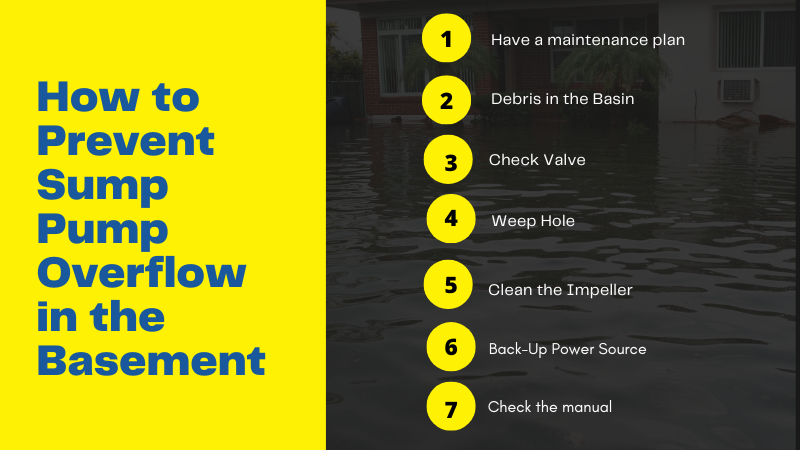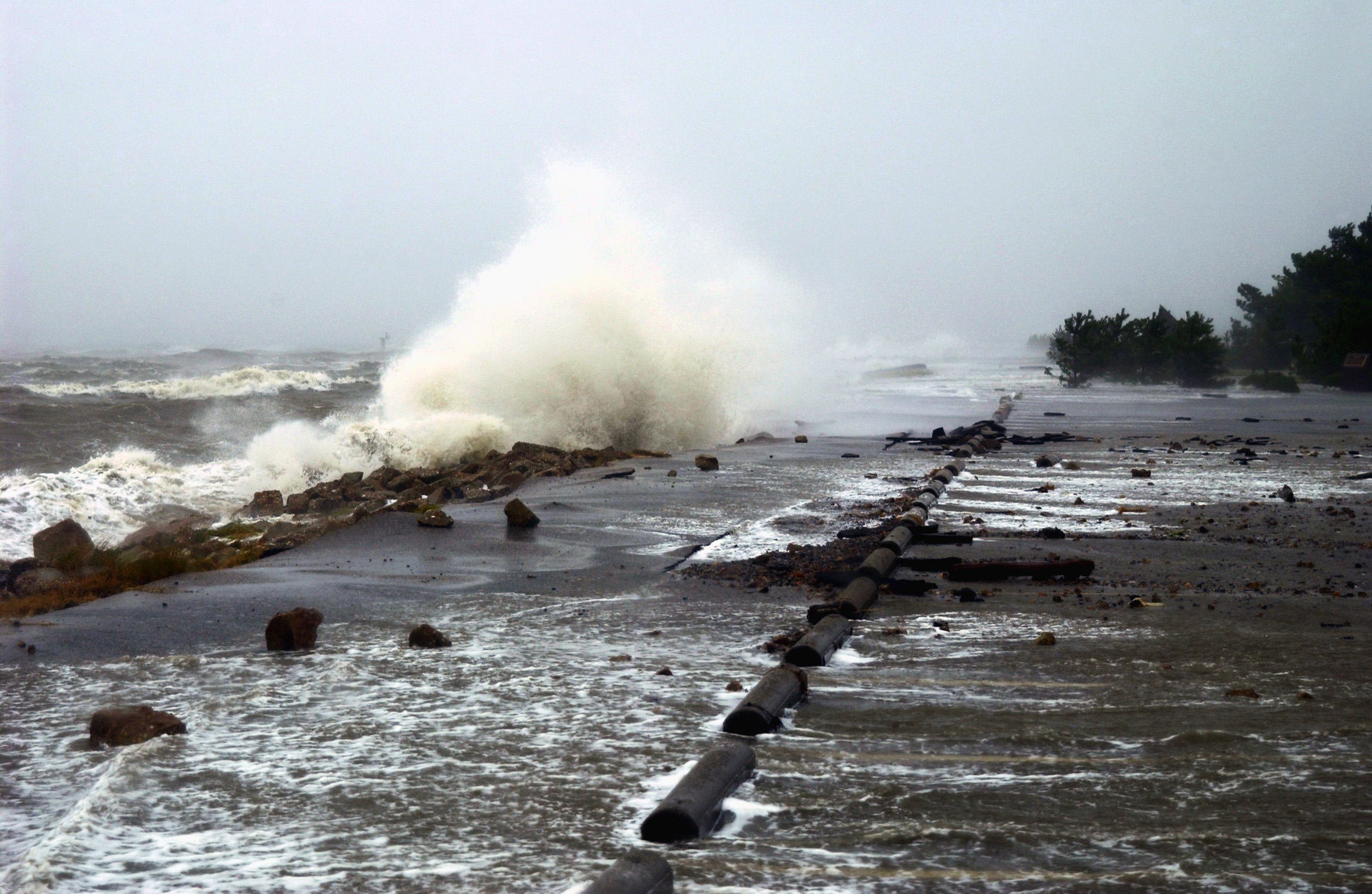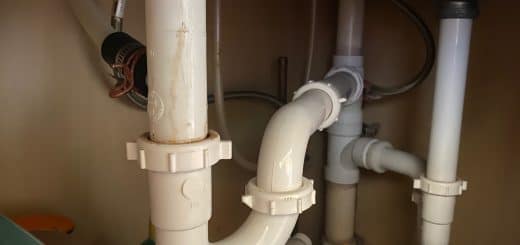Over the past few decades, it seems like you can get anything you want, at any time of day. That’s been true for years in large cities like New York and Chicago, but that’s becoming the case in smaller metropolitan areas and even in small towns. While some people complain about the need for 24-hour restaurants, gyms, and grocery stores, there are good reasons why emergency restorationRestoration is the process of returning a property to its pr... More services are available around the clock.
Residential Water Damage Restoration – FAQ
Innumerable factors, including toilet leaks, burst plumbing pipes, leaky water heaters and rainwater have the potential to cause significant water damage. RestorationRestoration is the process of returning a property to its pr... More is the solutionA solution is a homogeneous mixture of two or more substance... More to many water damage scenarios. Homeowners are at an advantage when they understand the nuances of water damage restorationWater damage restoration is the professional process of clea... More before an incidentAn incident is an event or occurrence that causes damage, di... More strikes.
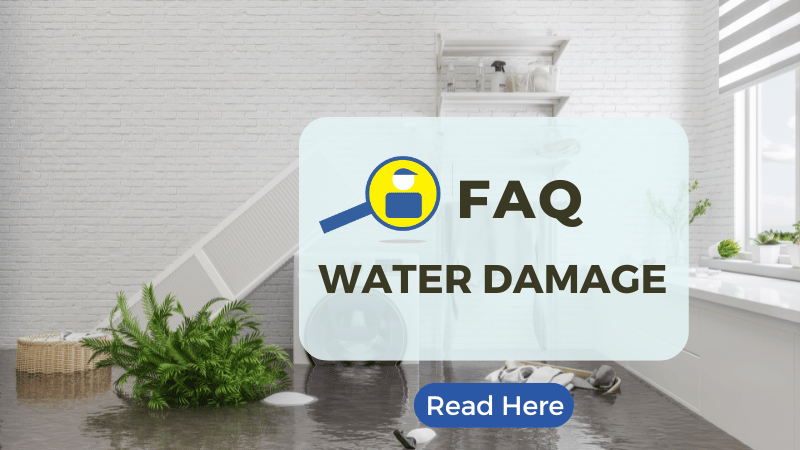
Where can water damage occur?
Any level of the home where water can seep through is fair game for water damage. From the topmost portion of the home to the lowest level, water can infiltrate and cause damage.
A leaky roof is common. Often due to missing shingles, damaged flashing and ice dams, leaky roofs allow rainwater to enter into the interior of the home.
The lowermost part of the home, the basement, is especially vulnerable to water damage. Numerous instances cause water damage to the basement, including clogged gutters, floodingFlooding is the overflow or accumulation of water in areas t... More, sewageSewage is wastewater containing biological and chemical cont... More backups and ruptured plumbing pipes.
Bathrooms and kitchens are notorious for spurring leaks that leadLead is a heavy metal that can be toxic to humans, especiall... More to water damage. Leaky faucets and toilets, cracked bathtubs and faulty dishwashers have the capability of dripping an endless sea of water onto floorboards, causing rot and moldMold is a type of fungus that grows in damp or humid conditi... More growth.
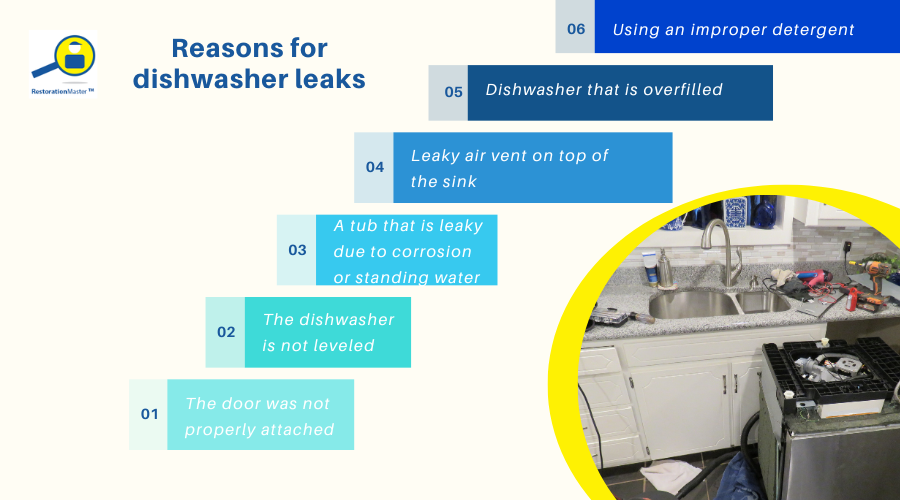
What are the classes of water damage?
Only a licensed professional has the expertise to classify water damage. Generally, water damage can be categorized into clean water, grey water and black water. The cost of cleanup depends on the classification of water damage.
Experts give drinking water a clean water classification because it is not a health risk. Faucets, rain, sprinklers and water heaters that cause leaks or floodingFlooding is the overflow or accumulation of water in areas t... More are deemed clean water damage and are the least costly to repairRepair is the act of fixing or restoring damaged property, m... More.
Grey water damage results from leaky dishwashers and washing machines. Grey water carries with it only a minor health threat due to contaminants like soap and detergent.
Black water is deemed the most harmful of all water damage. Backed up sewage, natural floodwaters and storm surges are ridden with dangerous contaminants that leadLead is a heavy metal that can be toxic to humans, especiall... More to illness or even death. As a result of the chemical remediation necessary to resolve black water damage, this category is the costliest to clean up.
How critical is speed?
A water damage restoration professional should be contacted as swiftly as possible in the wake of water damage. The lightning speed at which water damage is addressed can save homeowners up to 40 percent on repairRepair is the act of fixing or restoring damaged property, m... More services.
When moisture is left to absorb into porousPorous describes a material that contains small openings or ... More materials, like drywall and carpeting, the chances of moldMold is a type of fungus that grows in damp or humid conditi... More growth increase rapidly. Plus, untreated water damage spreads quickly. Homeowners save thousands of dollars in the long run when they hire a professional to look for causes of water damage and tackle even minor repairs—that may explode into a mammoth issue if left unaddressed.
What is the cost of restoration?
Water damage is a frequent issue in US households and restorationRestoration is the process of returning a property to its pr... More is expensive. In fact, one in 50 insured homes is affected by water damage each year. Insurers are likely to attempt to underpay or deny a claim. Here’s how homeowners can maximize their water damage insurance claim.
Does insurance cover all water damage restoration costs?
A homeowner’s insuranceHomeowner’s insurance is a policy that provides financial ... More policy may or may not cover the costs of water damage. Factors that heavily weigh in on insurance reimbursements include whether or not the damage was caused by a known factor or if the ruin was sudden and accidental.
For instance, knowledge of a leaky faucet and failing to maintain it will exclude the homeowner from insurance coverage. Sudden mishaps, such as a leaky dishwasher or water heater, are covered by insurance. FloodingFlooding is the overflow or accumulation of water in areas t... More is rarely covered by insurance; rather, flood insurance must be purchased separately.
What is the average drying time?
Generally, dryingDrying is the process of removing moisture from materials, s... More a home takes three to five days or more. The time it takes to eliminate moisture from the property is based on critical factors, including weather, classification of water damage, location of the ruin and length of time water has engulfed the space.
Water restoration technicians utilize specialized testing equipment to confirm the property is thoroughly dry. Relying on surface touch for dryness provides inaccurate results. For example, a carpet may feel dry but be drenched with moisture underneath the padding.
Are affected possessions discarded?
Furniture, wood floors and carpeting must be assessed. Upholstered furniture must be thoroughly dried before the evaluation. Wood floors may be refinished or replaced, depending on the severity of ruin. SewageSewage is wastewater containing biological and chemical cont... More contaminationContamination is the presence of harmful or unwanted substan... More of carpeting requires the carpets be thrown out.
How to Prevent Flooded Basements and Sump Pump Overflow
Your basement is the most vulnerable area of your home to floodingFlooding is the overflow or accumulation of water in areas t... More and you can experience basement floodingFlooding is the overflow or accumulation of water in areas t... More at any time of the year. There are so many ways that floodingFlooding is the overflow or accumulation of water in areas t... More can start in your basement including seepageSeepage is the slow movement of water or other fluids throug... More through cracks in the foundation, malfunctioning washing machines or water heaters, and sump pumpA sump pump is a pump installed in a basement or crawlspace ... More overflow or failure. It is very important to always keep your basement protected from excess water because even a small leak in the foundation can leadLead is a heavy metal that can be toxic to humans, especiall... More to major issues over time. MoldMold is a type of fungus that grows in damp or humid conditi... More growth is another major concern with floodingFlooding is the overflow or accumulation of water in areas t... More, especially in basements that are already more prone to moldMold is a type of fungus that grows in damp or humid conditi... More growth than many other areas of your home.
Flooded basement – Lake County, I
Fortunately, you can greatly reduce the risk of basement flooding in your home with a little effort on your part. Simple maintenanceMaintenance is the routine care, inspection, and repair of a... More like finding and fixing cracks in your foundation and cleaning your gutters can help protect your basement from floodingFlooding is the overflow or accumulation of water in areas t... More. Installing a sump pumpA sump pump is a pump installed in a basement or crawlspace ... More and keeping it maintained is perhaps the most effective way to keep water out of your basement. The following comprehensive tips will help you effectively prevent basement flooding and ensure that your sump pumpA sump pump is a pump installed in a basement or crawlspace ... More doesn’t overflow or malfunction.
Flood Prevention Tips from the Outside
Effective flood prevention starts outside your home. Rain and thunderstorms can happen at any time and outside features like your foundation, gutters, and windows are your first line of defense. Make sure you follow these tips for the outside of your home to protect your basement from floodingFlooding is the overflow or accumulation of water in areas t... More:
- Check your foundation inside and out for any cracks or openings. If the cracks are small, you can seal them with caulk. Extensive cracking requires help from a professional.
- Check the grading around your home. The ground should be sloping away from your home to prevent rain water from draining near your foundation. If the ground is not sloping away from your home, you will need to re-grade it.
- If your yard has drainage tiles, check their condition and replace broken tiles. If your home does not have drainage tiles, you should consider installing them.
- Remove all debris from your gutters to prevent them from overflowing. The downspouts must be pointed away from your foundation and carry the water no less than three feet from your home.
- Put window well covers over basement windows that are below grade. These covers will help keep out rain water as well as debris and animals.
Sump Pump Maintenance
The most effective way to prevent your basement from floodingFlooding is the overflow or accumulation of water in areas t... More is to install and maintain a sump pump. Sump pumps collect excess water from the ground around your home and pump it out when the basin fills with water. It is very important to keep your sump pumpA sump pump is a pump installed in a basement or crawlspace ... More running, especially during wet and rainy times of the year. These sump pumpA sump pump is a pump installed in a basement or crawlspace ... More maintenanceMaintenance is the routine care, inspection, and repair of a... More tips will help you ensure that your sump pumpA sump pump is a pump installed in a basement or crawlspace ... More will be functional when you need it:
- Check the motor by lifting the cover and pulling up the float. If the motor does not start running, make sure it is plugged in and getting power. You must call a professional if the motor still doesn’t run.
- Make sure the discharge line extends far enough away from your home to safely drain the water away from your foundation.
- It helps to have a backup power source for your sump pumpA sump pump is a pump installed in a basement or crawlspace ... More in case a severe storm causes you to lose power. A backup generator will keep your sump pumpA sump pump is a pump installed in a basement or crawlspace ... More running to avoid basement floodingFlooding is the overflow or accumulation of water in areas t... More.
Preventing Sump Pump Overflow
Sump pumps may malfunction for a number of different reasons and if you do not catch these issues, they could result in sump pumpA sump pump is a pump installed in a basement or crawlspace ... More overflow which will flood your basement. It is very important to do routine maintenanceMaintenance is the routine care, inspection, and repair of a... More checks to ensure that the sump pumpA sump pump is a pump installed in a basement or crawlspace ... More is working properly to prevent overflows. Remember to unplug the sump pumpA sump pump is a pump installed in a basement or crawlspace ... More before attempting to solve any issues. The following sump pumpA sump pump is a pump installed in a basement or crawlspace ... More maintenanceMaintenance is the routine care, inspection, and repair of a... More tips will help you find and resolve common issues that leadLead is a heavy metal that can be toxic to humans, especiall... More to overflows:
- Look for Debris in the Basin: Various objects and debris may fall into the basin of the sump pumpA sump pump is a pump installed in a basement or crawlspace ... More and damage the float mechanism that tells the pump when to drain. You can test the float mechanism by filling the basin with water to see if the sump pumpA sump pump is a pump installed in a basement or crawlspace ... More starts and drains properly. It is also possible for the float mechanism to stop working on its own.
- Inspect Check Valve: The check valve is an important feature because it prevents the pumped-out water from coming back into the sump pumpA sump pump is a pump installed in a basement or crawlspace ... More. Sometimes the check valve is not installed properly which could leadLead is a heavy metal that can be toxic to humans, especiall... More to a problem. The check valve has an arrow that should be pointing away from the sump pumpA sump pump is a pump installed in a basement or crawlspace ... More when installed properly.
- Clean the Weep Hole: If your sump pumpA sump pump is a pump installed in a basement or crawlspace ... More has a weep hole, it can be found between the check valve and the pump. Use a toothpick or something similar to clean the weep hole and don’t let it break off in the hole.
- Clean the Impeller: The impeller is a filter that filters debris from the water in the pump. When the filter becomes clogged, it will make a strange noise or cause the sump pumpA sump pump is a pump installed in a basement or crawlspace ... More to stop running. Make sure you check and clean this filter to keep your sump pumpA sump pump is a pump installed in a basement or crawlspace ... More running.
Basement flooding may be a common issue, but it is also preventable with the right actions. By effectively protecting your foundation from the outside and properly maintaining your sump pumpA sump pump is a pump installed in a basement or crawlspace ... More, you can drastically reduce the risk of basement floodingFlooding is the overflow or accumulation of water in areas t... More in your home. If you still experience water or floodingFlooding is the overflow or accumulation of water in areas t... More in your basement despite your best efforts to prevent it, make sure you call the water damage restoration experts of RestorationMaster right away. Our flood damage technicians use advanced equipment to remove flood water and we will also work to restore the damage and prevent moldMold is a type of fungus that grows in damp or humid conditi... More growth.
Common Drain and Sewer Problems – Signs of a Sewer Drain Clog and Drain Backups
It’s every host’s holiday nightmare – the house is beautiful, dinner is perfect and after the guests arrive, someone announces a clogged sink or toilet. The holidays are a prime time for this sort of domestic disaster because more people are in and out of your home and using your facilities. Unfortunately, sometimes what seems like a simple clog is really a sewer drain clog, and a flush with nowhere to go will end up in your sinks, tub, shower and floor.
How to Tell if you Have a Sewer Clog
One easy way to tell if you’re dealing with a sewer clog is if more than one fixture is backed up. Obviously toilets will be affected because they have the largest and most direct lines to the sewer. Check if the tub and shower are affected when the toilet is flushed. Since their drains sit lower than a sink drain, any water that can’t get through to the sewer will come back into the home at the lowest point.
Another easy way to tell if the sewer is clogged, especially in a powder room with no shower or tub, is to turn on the closest sink for a couple of minutes. If the water in the toilet bubbles or starts to rise, there’s a clog in the main line. Running the washing machine can also reveal a sewer clog. If the water draining out of the machine causes the toilet to overflow or backs up into the tub or shower, it could mean the main sewer line is clogged. However, if the toilet still flushes, this probably means a problem with the washing machine drainage and not the sewer.
Finally, if you have a main line clean out, remove the cap and look for any waste or water that may be backing up in there. Water should not be coming up the clean out pipe. Water coming up the pipe, or standing water, is a sure sign of a sewer drain clog.
What to Do if you Have a Sewer Clog
Regardless of how you determine you have a clog, it must be dealt with as soon as possible. A plunger or drain snake isn’t going to do the job. If you’re the DIY type, call a rental shop to see if they rent main line drain snakes, which are similar to the smaller drain snakes you use for the kitchen sink, but are powered by a motor. These are not cheap to buy, so it’s much cheaper to rent or call a plumber.
Once the clog has been removed, if there’s damage to your home, leave the cleanup to the professionals at RestorationMaster. They have the tools and the experience to safely clean even the worst damage.
Water Damage – Why 24/7 Service Makes a Difference
Disasters have absolutely no sense of timing. They seem to be firm believers in Murphy’s Law – anything that can go wrong will go wrong and at the worst time. A fire can happen in the middle of a party when a breeze blows a curtain into a candle or someone trips over a decorative sconce. Firefighters will arrive quickly to extinguish the flames and rescue anyone trapped inside, but they leave once the fire is out and somebody has to deal with the soggy, charred aftermath. You already have to work with the insurance company, find accommodations if the fire was bad enough, deal with a rollercoaster of emotions – you don’t need the hassle of cleanup! The cleaning products and equipment you have on hand aren’t up to this kind of extreme cleaning, and rental companies aren’t open in the middle of the night.
You might not have had a child in the house for years, but a small visiting family member can remind you just how easily a toy can clog a toilet. The added strain on your drains or septic system can leadLead is a heavy metal that can be toxic to humans, especiall... More to a water (or worse, sewageSewage is wastewater containing biological and chemical cont... More) backup at the most inconvenient time. Commercially available cleaning equipment and products can’t handle a sewageSewage is wastewater containing biological and chemical cont... More backup and most people don’t want to take on water damage cleanup themselves. Sewage backups should be left to professionals, due to the risks of dealing with biohazards without proper training and gear.
A rusting water pipe doesn’t care that you’re on a long-awaited vacation out of the country; it will pick that precise time to burst and flood your home so you return to flood damage that may or may not have moldMold is a type of fungus that grows in damp or humid conditi... More growth. Instead of relaxing and easing back into work and school, you have to rush around trying to mop up excess water. Even worse, cherished possessions may be waterlogged and building materials may be damaged enough to require restorationRestoration is the process of returning a property to its pr... More or replacement.
Why 24/7 Service Makes a Difference
In these cases, it’s vital to call for 24/7 emergency services as soon as the damage has been noticed. The damage will only get worse as time goes on. MoldMold is a type of fungus that grows in damp or humid conditi... More growth begins in as little as 48 hours after a water leak; it only needs moisture and a food source to grow. Most homes are full of food sources, like paper, textiles, and organic material. Once moldMold is a type of fungus that grows in damp or humid conditi... More starts to grow, it moves quickly and can spread undetected in areas like walls and ductwork. By that point, people may not know they have moldMold is a type of fungus that grows in damp or humid conditi... More in their walls until they experience a cold they can’t shake and discover they have a mold allergy.
It’s equally important to call for emergency restoration services in the aftermath of a fire. The chemicals used to fight a fire can cause damage to items that weren’t affected by the flames and heat. SootSoot is fine black particles composed of carbon and other ma... More can etch and tarnish household surfaces and the damage can be permanent without timely restorationRestoration is the process of returning a property to its pr... More. Smoke can travel much farther than fire and items that weren’t burned can be heavily damaged by smoke. Without professional restorationRestoration is the process of returning a property to its pr... More, these items can’t be saved.
By calling an emergency restorationRestoration is the process of returning a property to its pr... More services company immediately, you save yourself a great deal of trouble, both immediately and in the future. They have the training, equipment, and products to provide comprehensive disaster remediation, freeing you up to deal with insurance, manage guests, or take a minute and wonder what just happened.
No matter why you need emergency water damage restorationWater damage restoration is the professional process of clea... More or what time of day, call RestorationMaster. We provide 24/7 emergency services. Our technicians know how to manage a disaster. They’ll inspect and assess the area, extract the water, and completely dry it to prevent moldMold is a type of fungus that grows in damp or humid conditi... More growth. Our technicians will take daily moisture and humidityHumidity is the amount of moisture or water vapor present in... More readings to ensure the water is being removed. Will work with your insurance company to handle your claim as quickly and efficiently as possible.
If a flood strikes your home or business, call the professionals at RestorationMaster for help. Watch the video for more information on our services.
RestorationMaster Flood Restoration Services
When your property undergoes water damage, whether major or minor, contact your local water damage restorationWater damage restoration is the professional process of clea... More contractor – call RestorationMaster. A team of IICRC certified water technicians will promptly arrive onsite after an emergency call to start the water damage cleanup process.
Subsequent to an initial assessment, water meters are used to evaluate the level of moisture present on the property. Powerful water extraction equipment starts the dryingDrying is the process of removing moisture from materials, s... More process. Dehumidifiers are placed throughout the home for up to three days. Moisture and humidityHumidity is the amount of moisture or water vapor present in... More contents are evaluated daily via readings. The home is deemed thoroughly dry once baseline readings reach the dry standard.
RestorationMaster specialists advise homeowners to shut off the water to the home in the unanticipated event of water damage. Document the damage for insurance purposes; this includes taking ample photos and videos of all destroyed goods. If the electricity is on, never enter a room with standing water. While homeowners may be eager to clean up the watery mess, RestorationMaster technicians warn against using a household vacuum to absorb excess water.
Available 365 days of the year, 24 hours a day, RestorationMaster water damage restoration technicians are ready to return your home to its pre-damaged condition with speed and professionalism.











